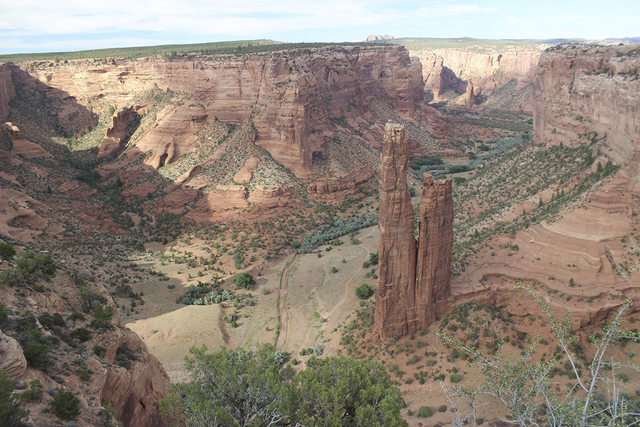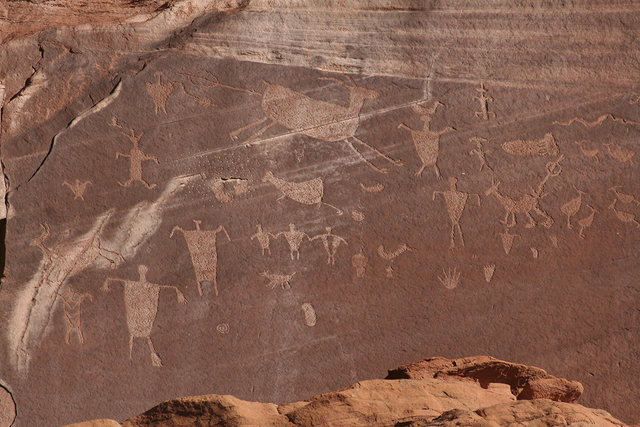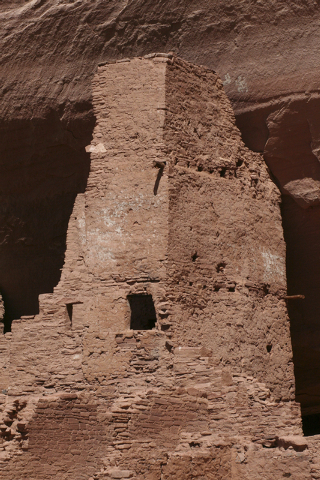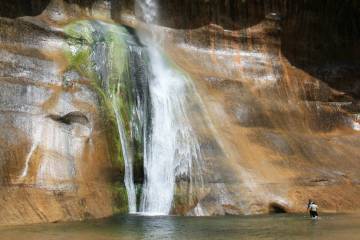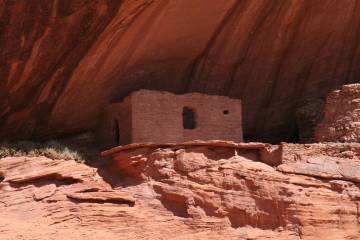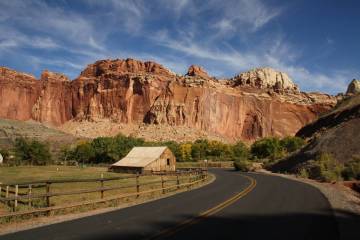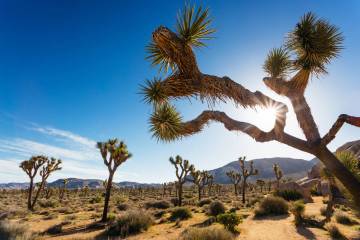Navajo monument offers archaeological history
A visit to Canyon de Chelly National Monument is a feast for the eyes and soul. There, you will find sheer red sandstone cliffs rising 1,000 feet above the fertile farmland of the canyons, where prehistoric Ancestral Puebloan ruins and hundreds of other archaeological sites dot the landscape. People have lived there nearly 5,000 years; it is believed to be the longest continuous occupancy of any site on the Colorado Plateau.
The monument was established in 1931 and comprises 84,000 acres within the Navajo Reservation in Chinle, Ariz. While the monument is administrated by the National Park Service, it lies on Navajo trust lands that are home to the Dine (Navajo) people. The elevation is between 5,500 and 7,000 feet, which means it will most likely be 15 or so degrees cooler than Las Vegas temperatures.
The monument has two main canyons, Canyon de Chelly (pronounced “de-shay”) and Canyon del Muerto. Both are home to hundreds of archaeological sites, including numerous ruins of former dwellings, high on the cliff walls in large natural alcoves. Some of the ruins can be viewed from the 10 overlooks along the South and North Rim drives, but seeing them up close is even more rewarding.
If you wish to hike down into Canyon de Chelly for that closer look, there is only one trail open to visitors, unless you sign up for a tour with a Navajo guide. The White House Trail is a 2.5-mile roundtrip and descends about 600 feet to the White House Ruin. Ancestral Puebloans occupied the dwelling about 1,000 years ago.
To visit other ruins and see more of the canyons, I recommend taking a Navajo-guided jeep tour. The tours are educational and travel into both of the main canyons. Tours are offered in several lengths, but even on a half-day tour you will stop and see dozens of archaeological sites, including ruins of former dwellings, as well as petroglyphs and pictographs. Horse and hiking tours are also available. Prices vary depending on which tour company you choose, and a list of guides appears on the park website, nps.gov/cach.
Natural water sources and rich soil bless the canyon, so many of its residents grow vegetables and fruit trees, graze cattle or raise sheep and goats. People live in modest homes, some of them the traditional hogans made of logs and earth. The canyon is lush with mature cottonwood trees, and wildflowers are in bloom this time of year. Among the wildlife of the canyon are bears, mountain lions, bobcats, wild turkeys and a variety of raptors and other birds.
Lodging is available near the park’s entrance at the Holiday Inn, 928-674-5000 or holiday-inn.com; Best Western, 928-674-5875 or bestwestern.com; or the historic Sacred Canyon Lodge, 928-674-5841 or sacredcanyonlodge.com. Camping is available at the Canyon de Chelly Cottonwood Campground at the entrance of the park. No campfires are allowed. Sites are available on a first-come, first-served basis. For more information, contact Navajo Parks and Recreation at 928-674-2106.
For a no-frills and extremely rustic experience, Spider Rock Campground is great. Its most charming features are hogans of various sizes that you can stay in overnight, and campfires are allowed. It is located in the park and offers guided tours of the canyon, either by hiking or by four-wheel-drive vehicle. Contact Howard Smith for a reservation at 928-674-8261 or visit spiderrockcampground.com.
From March through November, the Navajo Nation observes Mountain Daylight Savings Time, which means it will be one hour later than Nevada. The visitor center is open from 8 a.m. to 5 p.m. daily, except on Thanksgiving, Christmas and New Year’s Day. Alcohol is not permitted on the Navajo Reservation.
Directions
From Las Vegas, take U.S. Highway 93 south 105 miles to Kingman, Ariz. Go east on Interstate 40 for 283 miles to U.S. Highway 191 north. Drive about 74 miles to Chinle, Ariz. Turn right onto Indian Route 7 and drive about 2.7 miles to the park entrance.
Deborah Wall is the author of “Great Hikes, A Cerca Country Guide” and “Base Camp Las Vegas: Hiking the Southwestern States,” published by Stephens Press. She can be reached at deborabus@aol.com.



